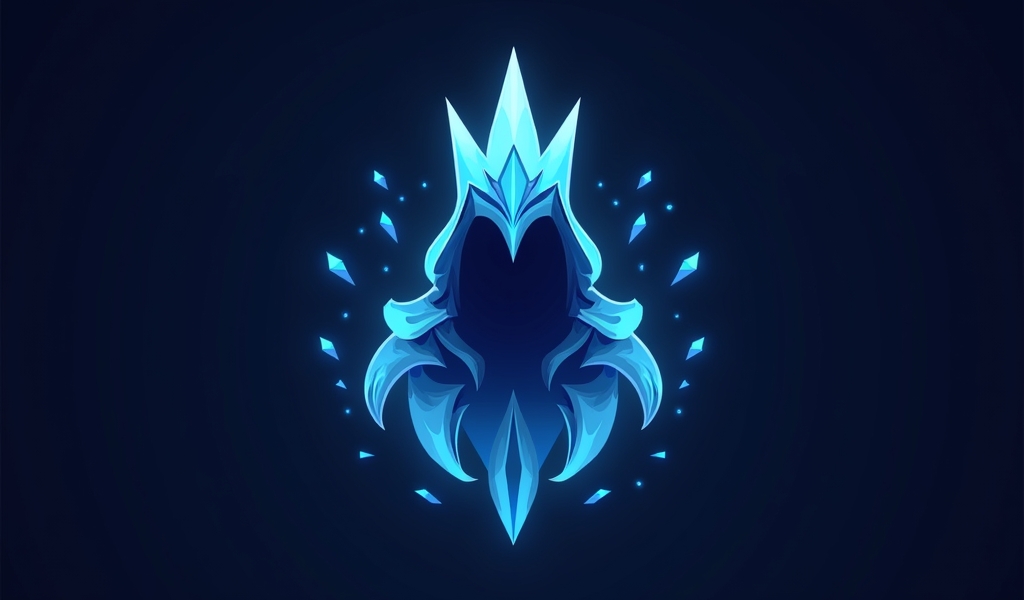Overview
How to play Lissandra effectively requires mastering her versatile kit of crowd control abilities, strategic positioning, and understanding when to engage with her Glacial Path. The Ice Witch rewards calculated aggression through her combination of mobility, lockdown potential, and survivability, making her a formidable mid laner capable of dominating team fights and controlling the map.
Table of Contents
Introduction to Lissandra
Learning how to play Lissandra effectively can transform your mid lane experience and give you a powerful tool in your champion arsenal. The Ice Witch brings a unique combination of crowd control, burst damage, and survivability that makes her formidable in both solo queue and professional play. As a control mage with exceptional engage potential, Lissandra rewards strategic thinking and careful positioning while punishing opponents who underestimate her power.
Whether you’re facing mobile assassins like LeBlanc with her trickster magic or battling against other control mages, Lissandra’s kit provides the versatility needed to adapt to almost any matchup. Her ability to lock down targets and create opportunities for her team makes her particularly valuable in coordinated play.
In this comprehensive guide, we’ll explore five essential tips for mastering Lissandra and unleashing her full potential on the Rift. From ability combos to positioning strategies, you’ll learn everything you need to know about how to play Lissandra at a high level. Let’s dive into the frozen depths of the Ice Queen’s powers!
Understanding Lissandra’s Abilities
Before diving into advanced strategies, it’s crucial to understand how to play Lissandra by mastering her unique ability kit. Each of her abilities synergizes with the others to create a cohesive playstyle focused on control and burst damage.
Passive – Iceborn: After a champion dies near Lissandra, she creates a Frozen Thrall from their corpse. These thralls slow nearby enemies before exploding for damage. This passive rewards team fight presence and can turn the tide of skirmishes.
Q – Ice Shard: Lissandra’s bread and butter ability. She throws a spear of ice that shatters on contact, dealing damage to the first enemy hit and then creating a spray that damages additional enemies in a cone. The shards travel further when passing through enemies or terrain, making positioning crucial.
W – Ring of Frost: A powerful AoE root around Lissandra that damages and immobilizes enemies for 1.5 seconds. This ability is perfect for setting up ganks, protecting yourself, or initiating team fights.
E – Glacial Path: Perhaps her most versatile ability. Lissandra casts a claw of ice that travels in a line. Reactivating the ability teleports her to the claw’s location. This provides mobility, engage potential, and escape options.
R – Frozen Tomb: Can be cast either on an enemy (freezing and damaging them while damaging nearby foes) or on herself (making her untargetable and healing her while damaging surrounding enemies). This ultimate defines Lissandra’s playmaking potential.
The key to mastering how to play Lissandra lies in understanding when to use each ability and how they work together. Her kit rewards calculated aggression and punishes recklessness, making her a perfect champion for players who enjoy strategic gameplay.

Tip 1: Mastering the Ice Path
Learning how to play Lissandra effectively starts with mastering her E – Glacial Path. This ability isn’t just a mobility tool; it’s the cornerstone of her playmaking potential and defines her unique identity on the Rift.
The Glacial Path has incredible versatility that goes beyond simple movement. Here’s how to maximize its potential:
- Use it as an escape: When positioned near walls, always have your E ready as an escape option. Casting it over walls makes for nearly uncounterable escapes during ganks.
- Create mind games: Cast E in one direction while walking another to confuse opponents about your intentions. You don’t always need to take the path!
- Extend your Q range: Cast E forward, then Q through your claw to get maximum distance on your Ice Shard.
- Master the E-W-R combo: Engage with E, immediately W upon arrival, then R your priority target for devastating lockdown.
Timing is everything with Glacial Path. Learn the exact travel speed to avoid telegraphing your engages too obviously. Remember that Diana players use similar surprise tactics with their dashes, so study how good Diana players conceal their intentions.
One advanced technique is the “round-trip” engagement. Cast E into the fight, deal your burst damage while the path is still active, then reactivate E to return to safety before enemies can retaliate. This works particularly well when stealing objectives or picking off isolated targets.
When climbing the ranked ladder with Lissandra, remember that your Glacial Path creates windows of vulnerability. When it’s on cooldown, you’re significantly more vulnerable, so experienced opponents will track your cooldown and look to punish accordingly.
Tip 2: Perfect Positioning and Timing
Positioning is paramount when learning how to play Lissandra effectively. Unlike longer-range mages such as Anivia with her ice-based zoning, Lissandra needs to get relatively close to enemies to unleash her full potential, which creates inherent risks.
The key to successful positioning with Lissandra involves understanding three distinct ranges:
- Q range (725 units): Your poke zone where you can harass safely
- W range (450 units): Your danger zone where you can root but are vulnerable
- E range (1050 units): Your engage/disengage range that defines your threat area
In the laning phase, position yourself to maximize Q poke through minions. The extended range when Q passes through targets gives you a safe harass option. Use the minion wave to your advantage by casting Q through the frontline to hit your opponent.
As for timing, Lissandra excels at punishing key cooldowns. Wait for your opponent to use their mobility or defensive ability before committing to an all-in. For example, bait out Kassadin’s Riftwalk before engaging with your full combo.
In team fights, patience is your virtue. While it might be tempting to dive the backline immediately, often the better play is to wait for the enemy engage and counter with your CC chain. This counter-engage style works particularly well when your team has other primary engage tools.
Remember that while your self-cast R provides incredible survivability, it also locks you in place. Time this defensive ultimate to avoid crucial enemy abilities rather than panicking and using it too early. Professional Lissandra players will often use self-R to bait out major cooldowns before their team follows up.
One advanced positioning technique is the “flank teleport.” Use Teleport on a ward in the enemy’s side lanes, then use E over a wall for an unexpected angle of attack that bypasses frontline defenders completely.
Tip 3: Strategic Itemization
Knowing how to play Lissandra effectively requires mastering her itemization, which should adapt to match your team composition and the enemy threats. Unlike standard mage builds, Lissandra often benefits from a unique blend of damage and survivability.
Core items that excel on Lissandra include:
- Luden’s Tempest: Provides burst damage, mana, and movement speed that enhances your engage potential
- Zhonya’s Hourglass: Essential for diving into teams, allowing you to engage, burst, stasis, then follow up with self-ultimate
- Shadowflame: Penetration against shields plus health makes this perfect for Lissandra’s medium-range combat style
Situational items should respond to specific threats and opportunities:
- Everfrost: Against hyper-mobile teams that need additional lockdown
- Banshee’s Veil: When facing heavy AP burst or critical CC abilities
- Morellonomicon: Against healing-heavy compositions
- Cosmic Drive: For additional movement speed and ability haste in extended fights
Your boots choice matters significantly too. Sorcerer’s Shoes provide magic penetration for greater burst, while Ionian Boots of Lucidity give you more frequent access to your crucial abilities. Against heavy CC teams, consider Mercury’s Treads to maintain your playmaking potential.
One underrated aspect of Lissandra’s itemization is her effective use of Demonic Embrace. Since you’ll often be in the middle of team fights, the burn effect provides consistent damage while the health conversion passive increases your survivability. This is especially effective when playing against Brand and other DoT mages who excel in extended fights.
Adapt your build order based on the game state. If you’re ahead, prioritize damage items like Shadowflame to snowball your advantage. If behind, rush Zhonya’s to maintain playmaking potential while reducing risk. Remember that statistics show that flexible build paths consistently outperform rigid item sequences.

Tip 4: Team Fight Dominance
Team fighting is where Lissandra truly shines, and mastering how to play Lissandra in these chaotic engagements can dramatically increase your win rate. Her combination of AOE damage and crowd control makes her a nightmare for grouped opponents.
In team fights, Lissandra can fulfill multiple roles depending on team needs:
- Primary Engage: Use E to get into the enemy team, W to root multiple targets, then R a priority target
- Counter-Engage: Wait for enemies to commit, then lock down their divers with your CC chain
- Peeler: Stay near your ADC and use your abilities to protect them from assassins
The ideal Lissandra combo for team fights follows this sequence: E in → Flash (if needed for positioning) → W to root multiple enemies → Q for damage → R on priority target → Zhonya’s if necessary → Q again when cooldown refreshes.
Your passive Iceborn becomes incredibly powerful in team fights. Position yourself so that the Frozen Thralls created from deaths can slow multiple enemies, setting up chain reactions of slows and explosions. This can turn a close fight decisively in your favor.
Remember that vision control is crucial before team fights. Place deep wards that allow you to flank with Teleport or prepare unexpected E engages from fog of war. This approach is similar to how Annie players set up devastating engages, though Lissandra offers more versatility.
When facing teams with multiple threats, prioritize locking down the enemy’s primary damage dealer. However, be adaptable – sometimes rooting three medium-priority targets with W is more valuable than ulting a single high-priority target.
One advanced team fighting technique is the “bait and freeze.” Cast E but don’t immediately take it, making enemies burn cool downs preparing for your arrival. Then, when they’ve committed resources, either take the E path or let it expire based on which option creates more advantage.
Tip 5: Map Control with Freezing Techniques
Map control separates good Lissandra players from great ones. Learning how to play Lissandra with a strategic approach to the map leverages her wave clear and mobility to create constant pressure across the Rift.
Lissandra’s Q and W provide exceptional wave clearing capabilities that allow her to quickly push lanes and create opportunities for roaming. After shoving your lane, you have several high-impact options:
- Roam to side lanes with E over walls for unexpected ganks
- Invade the enemy jungle with your jungler to secure vision or buffs
- Set up deep wards to track the enemy jungler
- Rotate to objectives before your lane opponent can respond
Her strength in controlling river access makes her particularly effective at securing Scuttle Crabs and contesting Dragon or Herald. The combination of CC and burst damage makes her an excellent skirmisher in these small-scale encounters.
When split pushing (which should be situational with Lissandra), always keep your E available as an escape tool. Unlike champions such as Aurelion Sol with his star-powered roaming, Lissandra needs to be more cautious about overextending without vision.
One advanced map control technique is the “freezing trap.” Clear wards in a side brush, then wait with E prepared. When an enemy comes to ward or check the brush, engage with your full combo for an almost guaranteed kill. This creates pressure that forces enemies to respect your disappearance from the map.
In the mid to late game, use your wave clear to maintain side lane pressure before grouping. This “slow push” technique forces enemies to respond to the building wave while you’ve already grouped with your team elsewhere on the map, creating a numbers advantage.
Remember that Lissandra functions as an excellent goalkeeper when defending inhibitors. Her AOE abilities can clear super minion waves efficiently, and her CC can punish overeager divers. This defensive capability shouldn’t be underestimated when games go long.
Conclusion
Mastering how to play Lissandra opens up a world of playmaking potential that few champions can match. Her unique combination of mobility, crowd control, and burst damage makes her a versatile pick that can adapt to nearly any team composition or matchup. The five essential tips we’ve covered – mastering Glacial Path, perfecting positioning, strategic itemization, team fight dominance, and map control – provide the foundation for Lissandra excellence.
Remember that patience and timing are just as important as mechanical skill when playing the Ice Witch. Knowing when to engage and when to hold your abilities can be the difference between a game-winning play and a costly mistake. Like Ahri with her charm-focused gameplay, Lissandra rewards calculated aggression over reckless dives.
As you continue to practice how to play Lissandra, you’ll develop an intuitive understanding of her limits and capabilities. Don’t be discouraged by initial setbacks – even experienced players are constantly refining their Lissandra gameplay. With persistence and application of these tips, you’ll soon be freezing enemies in their tracks and climbing the ranked ladder.
Frequently Asked Questions
Is Lissandra good for beginners in League of Legends?
Lissandra is moderately friendly for beginners due to her straightforward abilities and built-in survivability with her self-ultimate. Her reliable waveclear and point-and-click ultimate make her more forgiving than many mid laners. However, optimizing her E-Glacial Path requires practice, and her relatively short range means positioning mistakes can be punished heavily. For complete beginners, champions like Annie might be easier, but Lissandra is an excellent choice for those looking to expand beyond starter champions.
What are Lissandra’s worst matchups?
Lissandra struggles most against long-range mages who can harass her safely, such as Xerath, Vel’Koz, and Lux. Champions with strong sustained damage and mobility can also be challenging, particularly Sylas (who can use her ultimate effectively) and Cassiopeia (whose Ground effect prevents Lissandra’s E escape). Artillery mages force Lissandra into uncomfortable situations where she must either sacrifice CS or risk taking significant poke damage before she can engage.
When should I use self-cast R versus casting R on an enemy?
Use self-cast R when: you’re being focused in team fights, you need to buy time for cooldowns, you’re diving turrets, or you need to dodge crucial abilities like Karthus ultimate or Zed’s death mark. Cast R on enemies when: you need to remove a high-priority target from a fight, you’re ganking and need guaranteed CC, or when you have follow-up damage from teammates who can capitalize on the immobilized target. Generally, self-cast for survivability and enemy-cast for offensive plays.
What runes work best on Lissandra?
Electrocute is the most common keystone for Lissandra, providing burst damage that complements her combo playstyle. Secondary trees vary based on matchup and playstyle: Inspiration offers utility with Perfect Timing (free Stopwatch) and Biscuits for sustain, while Sorcery provides Manaflow Band and Transcendence for resource management and cooldown reduction. Against difficult matchups, consider Aftershock for survivability when engaging. Always adapt your minor runes to counter your lane opponent’s damage type.
Is Lissandra better in solo queue or team play?
Lissandra excels in both environments but for different reasons. In solo queue, her self-sufficiency, roaming potential, and pick potential allow her to influence the map and snowball advantages. In coordinated play, her reliable engage tools and counter-engage capabilities make her invaluable for team compositions. Her value increases significantly in team play where communication allows for perfect follow-up to her engages. Overall, she’s slightly stronger in organized play but remains a solid solo queue choice up through the highest ranks.




